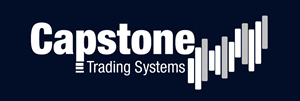Risk Managment
Risk management is based on how much money or the percentage of your account to risk on any one trade or any one system. It can also be the amount of money that will be at risk in any given day, week, month, or year. Individual trade stop losses are common. The same principle of individual trade stop losses can be applied to a system or portfolio as well. If the worse case drawdown in a system is $5,000, a system stop loss could be a multiple of the worse case draw down. For example, some traders may only risk the worse drawdown on a trading system while others will risk 1.5 to 3 times the historical worse case drawdown. Risking at least the worse case drawdown should be the minimum commitment when trading an individual system or portfolio. It does not make much sense to start trading a system or portfolio and then stop after one month because there was a losing month. Most trading systems and portfolios will have losing streaks and losing months.
It is possible to use an equity curve management algorithm to systematically determine when to start and stop a system (see below). Also, if you are the system developer and the market begins to act distinctively different than for the reasons in which the system was designed then that can be a valid reason to discontinue trading a system. The last reason mentioned requires more experience in the markets and a greater understanding of the system and how it works in the markets. An example of this type of system could be intermarket analysis. Recent trends in the market show a direct correlation between the US Stock Market and the Euro Currency. Many have used the Euro Currency as a leading trend indicator to the US Stock market while the 30 Year Treasury Bonds and US Dollar Index have been inversely correlated and tend to trend in the opposite direction of the US Stock market. Lately it appears the fundamental reasons for this occurring have begun to change and the stock market and dollar index are more correlated while the stock market and euro currency are less correlated. Shifts in volatility can also create changes in the market and tend to create more challenges in determining how to trade a system that the actual direction of the market.
To summarize risk control, example of risk management could be:
Maximum trade risk: 0.5%-2% per trade
Daily risk: 2-5% per day
Weekly risk: 3-5% per week
Monthly risk: 5-10% per month
Annual risk: 10-50% per year
These are only examples and a list of how to establish risk control. It varies greatly based on an individual traders risk tolerance and capitalization. If a trader comes to the market with a $10,000 account, risk tolerance on a percentage basis should be pretty high as most systems trade with at least $300 to $500 stop losses (3-5% per trade based on a $10,000 account). Many individual futures trading systems also have a $4,000 – $5,000 maximum draw down which would be 40-50% of the account balance.
